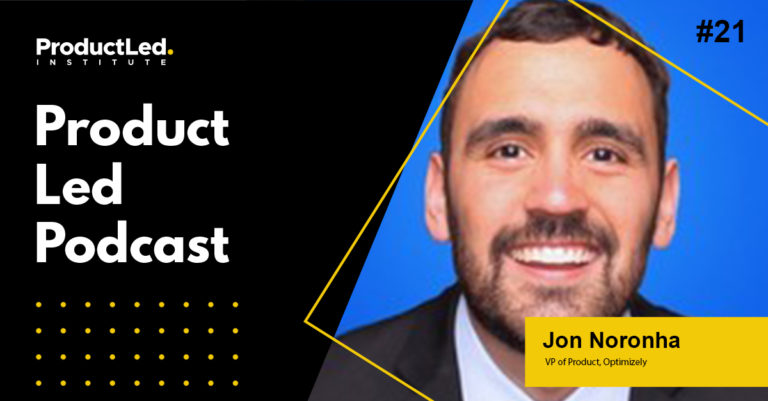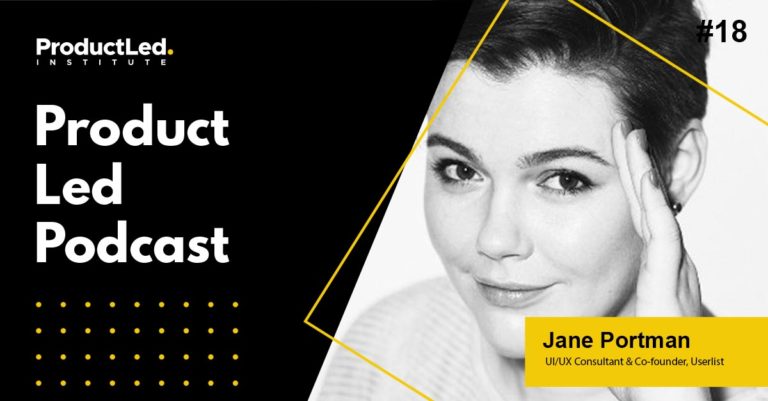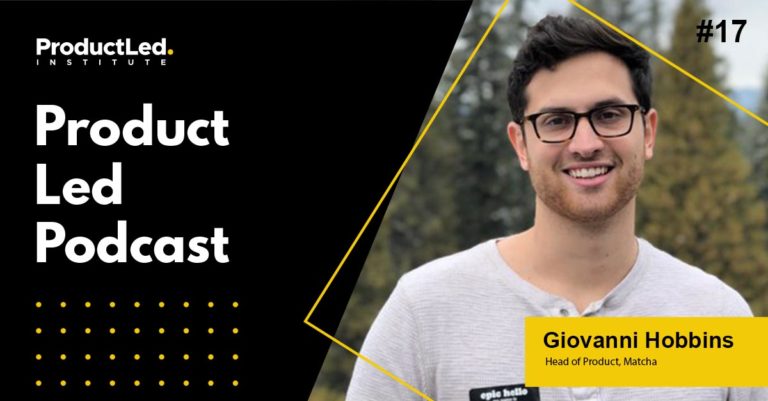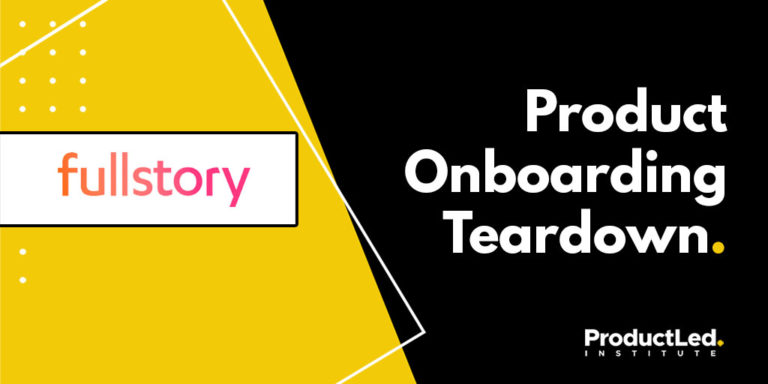Product demos and free trials are two popular ways to let customers experience a software product before buying.
When SaaS companies are just starting out, demos are typically the go-to choice because they’re a great way to get insight into your prospects’ pain points and objections to your product.
And for most B2B SaaS companies, it always makes sense to offer a demo because some of your customers prefer the opportunity to talk to a human before making a purchase.
But relying only on demos isn’t scalable, which is why many businesses with aggressive user growth goals consider offering a free trial. At the same time, offering a free trial carries several risks — which many companies underestimate beforehand.
In this article, we’ll break down which offer makes sense for your product by covering the following:
- Demo vs. Free Trial: Definitions, Types & Examples
- Why More SaaS Companies Are Offering Free Trials
- Risks of a Free Trial & How to Mitigate Them
- When to Consider Only Offering a Demo
If you’re thinking about offering your customers a free trial, the ProductLed Accelerator can help you avoid the biggest mistakes that companies make when adopting a product-led strategy. To learn more, take our free course on the fundamentals of product-led growth.
Free Trial vs Demo: Definitions, Types & Examples
First up, let’s define our terms.
- A demo is a free product walkthroughled by a member of the Sales team to show prospective customers how they could get value out of the product.
- A free trial is an opportunity for customers to try the product for a limited time (or limited number of uses) without paying.
Types of Demos
A demo is typically the default option for SaaS companies’ Sales teams to show prospective customers how the product works and what problems can be solved with it.
A live, one-on-one meeting is the most common format for a SaaS product demo because it’s the best way to show prospective customers how the product can solve their specific problems and make sure they get all their questions answered.
However, if you don’t have enough salespeople to offer one-on-one demos, or if the lifetime value (LTV) of your customers is too low for you to afford a Sales team, there are other ways to give customers a taste of your product during the sales process:
- A pre-recorded video walkthrough of the product: Also called “explainer videos”, these videos can be a great way to answer FAQs from your customers. These are best used in addition to a demo, because they don’t give customers the opportunity to ask their own questions. But when done well, they can cut down on non-serious leads and help your Sales team make better use of their time. For example, accounting software provider Netsuite offers several product tour videos on its website and on its YouTube channel.

- A live product demo webinar: Some companies offer a weekly or daily sales webinar that prospective customers can attend to see a product demo or tutorial and then ask questions. This approach can help you serve a higher volume of leads with fewer salespeople, but since you can’t customize the demo to the attendees’ companies, they have to envision how the product will solve their specific problems on their own. For example, customer communications platform Intercom offers weekly product demonstration webinars (in addition to a free trial).
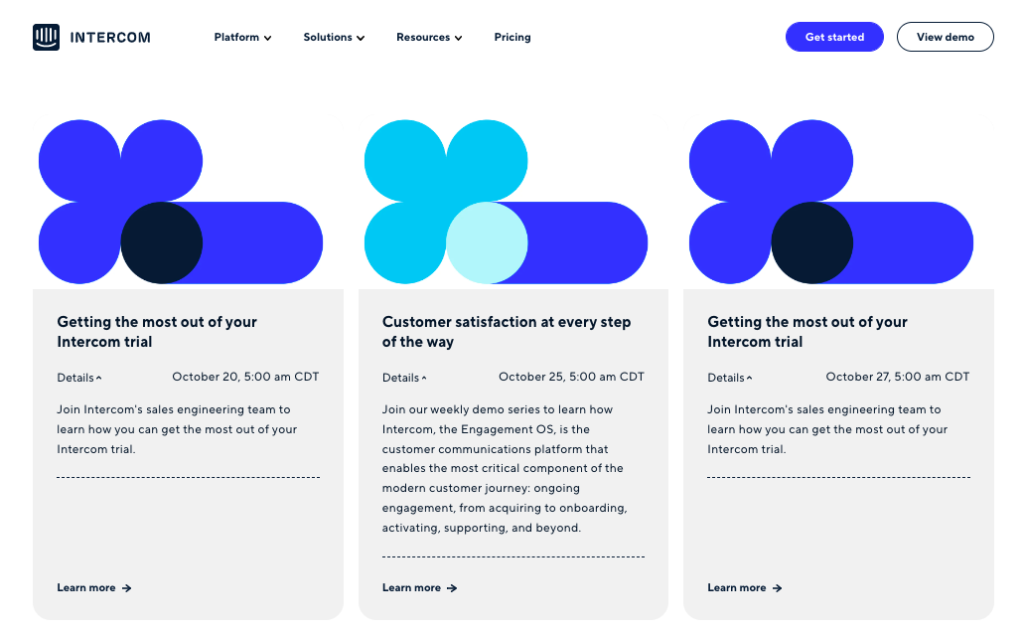
- An interactive online preview: Another option is an interactive preview of your app, hosted on your website. These are sometimes called sandboxes. They typically let users click around on a replica of the product’s UI that is loaded with dummy data. Prospects get to test the basic functionality and user experience of your app on their own time, but they don’t get to ask questions, and the Sales team gets no feedback from users about their pain points. For example, OfficeRnD, a provider of desk and meeting room booking software, lets website visitors book any of the fictional rooms in this fictional office without signing up or logging in.
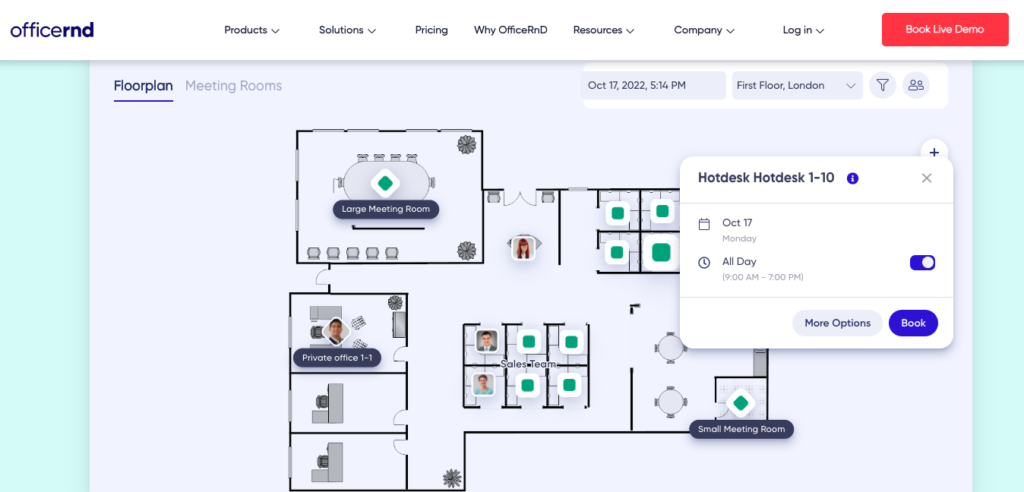
Many software companies use a combination of multiple types of demos, with or without a free trial.
Types of Free Trials
When you offer a free trial, your potential customers can explore the full product on their own for a limited time without interacting with sales reps. They get first-hand experience with your product and can see whether it will fit into their workflow before making a purchasing decision.
Note: Don’t confuse a free trial with a freemium business model, where customers can access a limited version of the product for free with no time limit.
There are several ways to structure a free trial:
- Opt-In Free Trial: Customers don’t have to provide a credit card to try the product. Instead, if they want to buy (opt-in), they provide purchasing info at the end of the time-based trial. When I Work offers a 14-day free trial that doesn’t require a credit card.
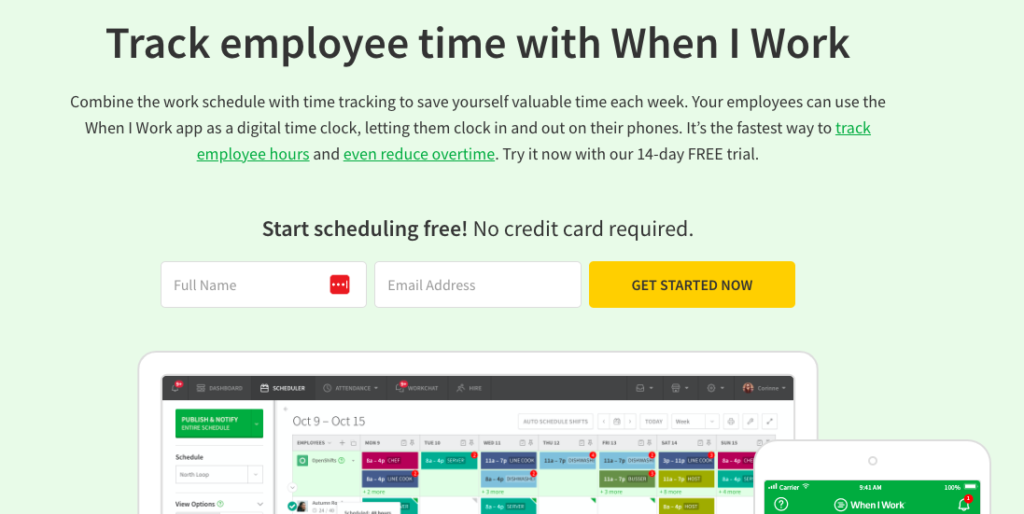
- Opt-Out Free Trial: To access this time-based free trial, customers provide credit card information and agree to be charged at the end of the trial if they don’t cancel (opt-out). Amazon Prime’s 30-day free trial is an example of an opt-out free trial because you’ll be charged if you don’t cancel before the trial ends.
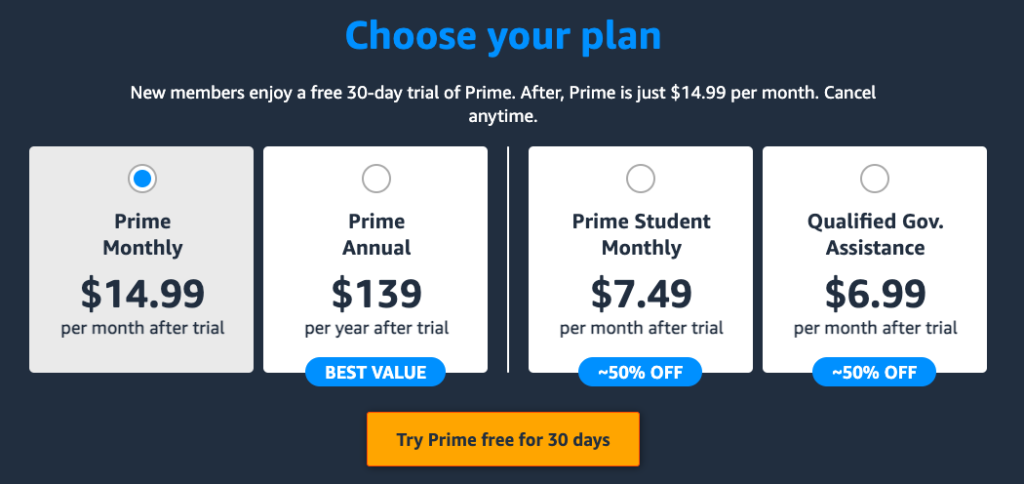
- Usage-Based Free Trial: Similar to an opt-in free trial, the usage-based trial doesn’t have a time limit and instead has a usage cap. When customers reach that cap, they can provide payment info to keep using the product or get a higher usage cap. OneDrive, Microsoft’s cloud storage service, offers 5GB of storage for free.

Why More SaaS Companies Are Offering Free Trials
Today, many SaaS companies like 7Shifts, Appcues, and Hootsuite use free trials to let customers test drive the product without talking to a salesperson.
As Jason Fried, CEO of Basecamp, says:
“In the world of small business software the product — not the salesperson — does the talking.”
Here are five reasons why many SaaS companies are opting for a free trial.
#1. Meet Customer Demand
Customers want to try new products before they buy them. This is true whether you’re selling software or street food. Three out of every four B2B buyers would rather self-educate and buy through an app than learn about a product from a salesperson, according to Forrester.
#2. Remove Friction from the Buyer’s Journey
If your product can sell itself, meaning customers can easily discover its value within a few minutes of using it, then a sales demo is just unnecessary friction that slows down the buying process. A self-serve free trial removes that friction.
#3. Reduce Customer Acquisition Cost (CAC)
When implemented as part of a larger product-led growth strategy, a free trial can help you reduce your overall CAC by reducing the size of your Sales team and eliminating sales commissions from a significant portion of your deals. Instead of having to pay a commission for every basic, low-cost package you sell, you can let your Sales team focus exclusively on high-value prospects that need extra hand holding and who can afford to pay a premium price.
#4. Access a Wider Top of the Funnel
Customers don’t usually request a demo until they’re near the final stages of their buying journey. But they’ll often try out a product that offers a free trial (especially if they don’t have to provide any credit card info) when they’re much earlier in their research process.
This means you’ll almost always bring in significantly more leads through your free trial than your demo — often 10 or 20 times higher. If you can optimize your free trial conversion rate, you may be able to grow much faster than if you only offer a demo.
#5. Gain Traction with Users Before Selling the Product
Senior-level managers with decision-making authority aren’t the only people who look for software solutions for their problems. Individual contributors also frequently search for tools to make their jobs easier. When those employees find a tool that works well for them, they may request that their managers consider purchasing the tool for the whole team. And for managers, purchasing a tool that employees have already tested and begun to adopt is much less risky than introducing a new tool in the hope that employees will adopt it.
Risks of a Free Trial & How to Mitigate Them
If you want to achieve faster user growth and speed up your sales cycle for SMB customers, a self-serve free trial could be a great option, if you take care to mitigate the risks.
Risk #1: The Free Trial Gives Users a Bad Impression of Your Product
The biggest risk of a free trial — and one that is often overlooked by companies when they first introduce a free trial — is that you only get one chance to impress users with your product. Free trial users who don’t immediately see the value of your product will churn, and you won’t be able to win them back. If your free trial conversion rate is too low, your user growth may stall or even slow down as compared to when you only offered a demo.
Solution: Make Sure Customers Can Solve a Problem During Your Free Trial
The key to a successful free trial is to make sure your users can accomplish something meaningful during the trial. We explain this further in our guide to improving your free trial conversion rate, but there are two essential steps you must follow to mitigate this risk:
- Understand which problem users are looking to solve with your product. This requires fully understanding your ideal customer’s pain points and what they’re trying to accomplish.
- Optimize the onboarding experience to help your customers accomplish their goal as fast as possible. When designing their onboarding experience, many companies focus on showing customers all the bells and whistles of the product, instead of helping them achieve a quick win. This results in most onboarding journeys having a lot of unnecessary steps that slow users down from achieving their goals. To help more users see the value of your product, remove any steps from the onboarding process that don’t guide them to achieving their goal.
Risk #2: The Free Trial Will Cannibalize Your Demos
Many companies that offer both a free trial and a demo structure their landing pages with two calls to action: one to start your free trial, and one to request a demo.

Although you’ll usually get more leads overall with a free trial than with a demo, you’ll almost always see the total number of demo requests decrease. This can leave your Sales team wondering how they’re going to meet their targets. You might even lose some Sales team members if they feel like you don’t value them.
Solution: Let the Product Qualify Leads for You
Sales teams are still an essential part of most product-led strategies, but their role looks different. Instead of interacting with every prospective customer through the demo process, Product-Led Sales teams focus their time on only the highest-value prospects — those who would be most interested in your company’s most premium offer.
To identify those prospects, Sales teams rely on product qualified leads (PQLs). A PQL is a lead who has already experienced meaningful value from your product, making them much more likely to become paying customers. You can identify PQLs by tracking new users’ activity in your app to see which ones reach your activation point.
Risk #3: Some Customers Will Abuse Your Free Trial Offer
Whenever you offer a free trial, there’s a risk that customers will use new email addresses to keep renewing their free trial. This can be a big problem for opt-in free trials and usage-based trials, especially if customers can get value from your product without much setup.
Solution: Solve Beginner Problems for Free, and Charge for More Advanced Problems
A small amount of abuse of your free trial is inevitable. However, if you’re seeing a significant number of one-time users who get meaningful value from your product and still churn before becoming paying customers, you may be trying to solve a beginner-level problem. In this case, it might be better to switch to a freemium model and give away that product for free and find more advanced problems to solve with your paid product.
When to Consider Only Offering a Demo
Even though a majority of software users say they prefer learning about a product on their own through a free trial, there are still many cases when a product demo is a much more effective way to show the value of a product.
Demos provide four benefits over free trials:
- Convert prospects at a higher conversion rate than free trials: Demos typically have a higher conversion rate than free trials because the sales rep can customize the presentation to focus on the prospect’s exact situation.
- Win bigger deals: Demos tend to appeal to manager-level and above prospects, who are evaluating a solution for their entire team, while free trials usually are more appealing to individual contributors who are looking for a tool for their personal use.
- Offer custom pricing packages (and software features): Demos let salespeople get to know a customer’s exact needs and budget. They can adjust the pricing package accordingly, and also spot opportunities to sweeten the deal by offering a custom package, or even some custom development services. Those extra features can be the difference between winning a deal and the customer walking away.
- Get instant feedback from customers: By talking directly with prospects, you can learn what pain points prospects are trying to solve, which can help you continue to refine your product and its positioning. With a free trial, you have no direct contact with your customers unless they reach out to you.
As we mentioned before, for most companies, it makes sense to offer a demo, even if you also offer a free trial, because some portion of your customers will always prefer the additional handholding and the opportunity to ask questions before they buy.
But there are a few scenarios where it makes sense to only offer a demo (and not a free trial):
- You’re building a new product and you don’t yet know exactly what problem you’re solving for customers.Product demos can help startups hone in on their product’s positioning by getting immediate feedback from customers.
- You don’t have enough resources to hire a product manager and optimize the free trial. The onboarding experience of a free trial needs to be carefully designed to show customers the value of the product and build momentum toward a purchase. It usually takes a lot of trial and error to perfect the onboarding journey, so the process usually requires a dedicated product manager, instead of adding a new responsibility to your existing developers’ workload. If you don’t have the resources to add another team member who will own the free trial experience, your product probably isn’t mature enough for self-service.
- Your product has a very long time-to-value. It can be hard for customers to understand the value of products with complex use cases or an extensive setup process during a free trial. If customers can’t reach their “Aha!” moment on their own without seeing a product demonstration, a free trial will likely result in extremely high churn.
We provide a more in-depth analysis of when to use a demo-only model in our article on product-led growth vs sales-led growth.
Enroll in the Product-Led Accelerator to Optimize Your Entire Go-to-Market Strategy
There are a lot of factors to consider when deciding whether to use a demo or a free trial as your primary tool for showing customers the value of your product. The ProductLed Accelerator helps companies develop a successful go-to-market strategy, whether they choose to offer a demo, free trial, freemium product, or a combination of all of the above.
The live, online training program is spread across four weeks:
- Week 1: Develop your product-led strategy.
- Week 2: Identify your product-led model (freemium, free trial, or one of three hybrid models.)
- Week 3: Optimize your onboarding sequence so that users reach the core value of your product as quickly as possible.
- Week 4: Optimize your monetization strategy by finding a way to charge users that aligns with your acquisition model and maximizes upgrades.
Along the way, we provide case studies, decision frameworks, templates, and worksheets so you can learn how to put the strategies to work for your company.
We host Zoom workshops every Tuesday throughout the program to answer questions and offer feedback. You get access to a private Slack group to connect with your cohort and get help from leading industry experts. Plus, you have access to all course materials for a year.
More than 590 students have taken the program since it launched in 2020, ranging from CEOs to VPs of Product to Customer Success directors. Team members from Adobe, HubSpot, Mixpanel, and Microsoft have used the Accelerator to hone their strategy for a new product launch or transition existing products from sales-led to product-led.
After taking our training, participants have seen their free product signups double and their free-to-paid upgrades triple (Tettra). Some participants have seen almost overnight growth in MRR by implementing just a couple of recommended changes in their onboarding process. Others say the program helped their team get aligned around all the changes required in each business unit when moving from a sales-led to a product-led approach.
Enroll today to join our next live program or take our free PLG certification course now. You can also join the world's largest product-led growth community on Slack for free to learn and share industry best practices and get questions answered by peers and experts.


